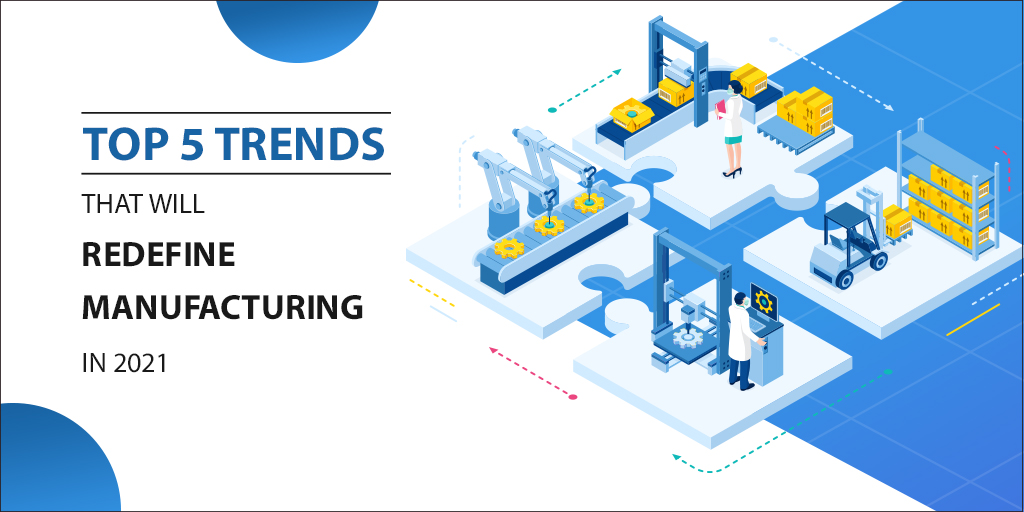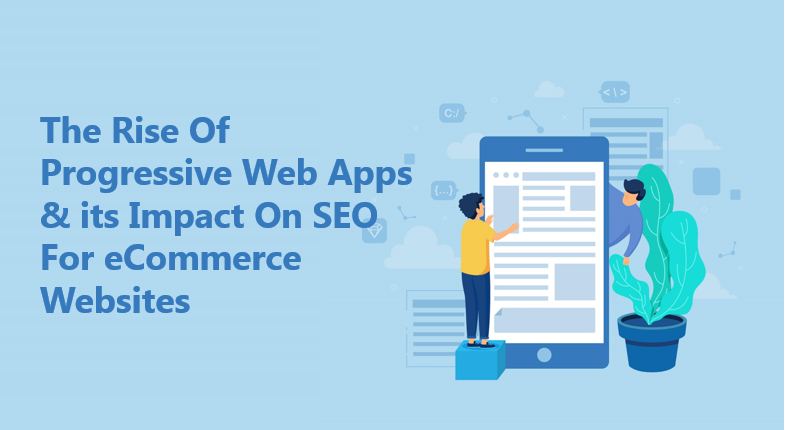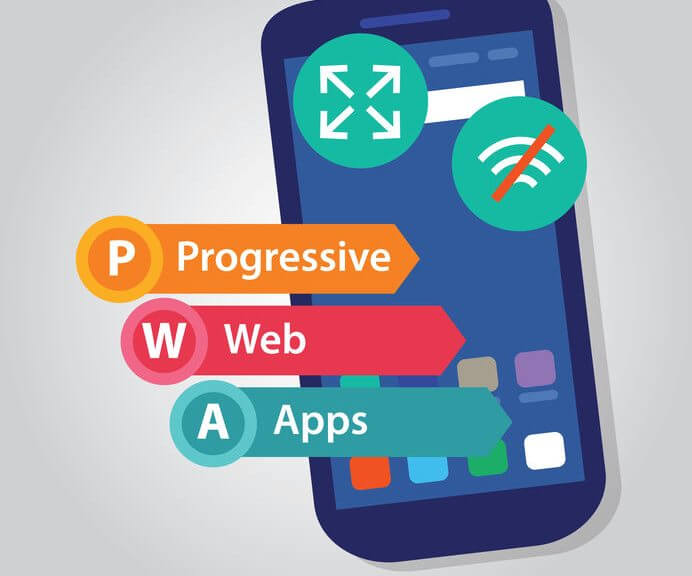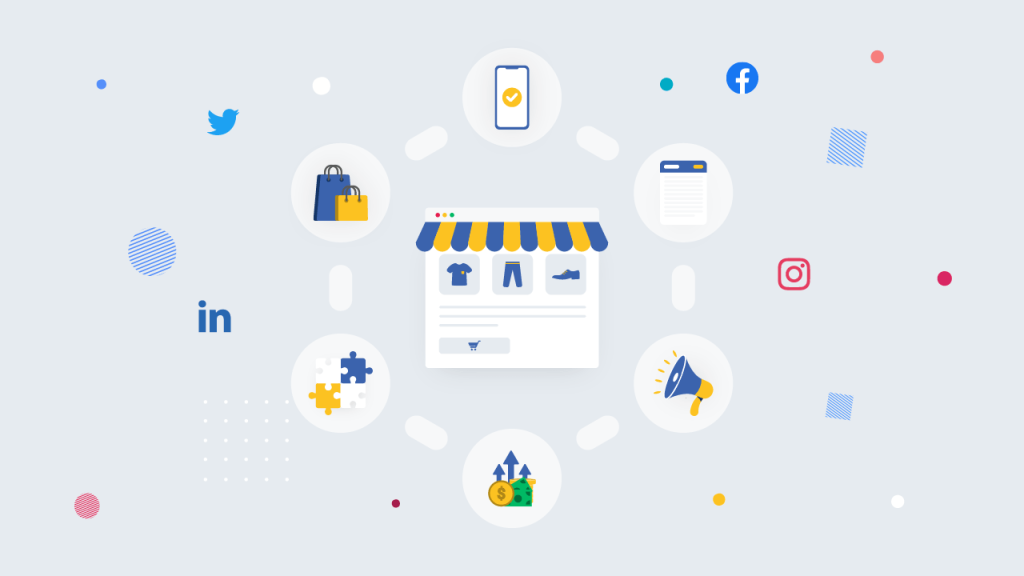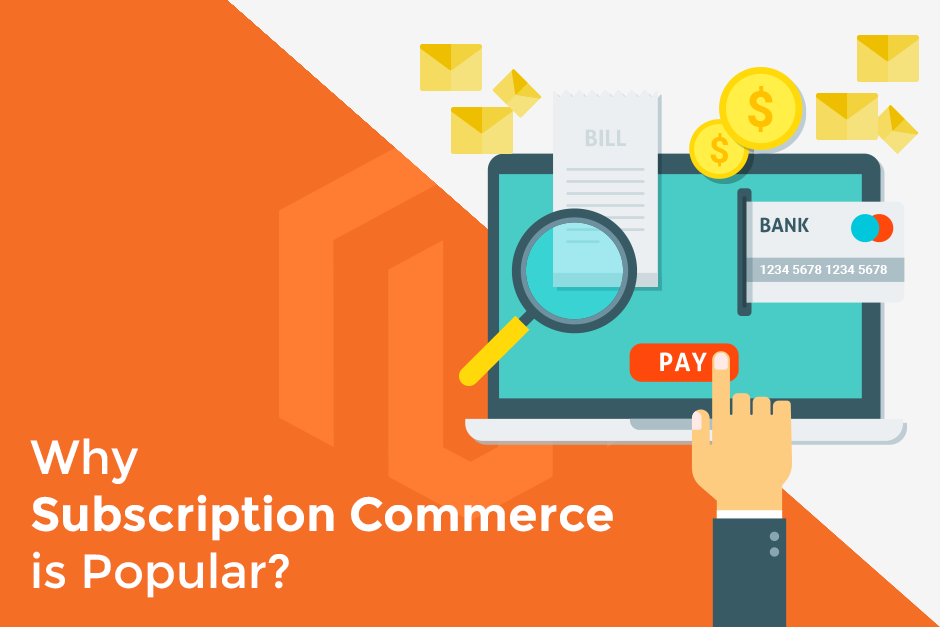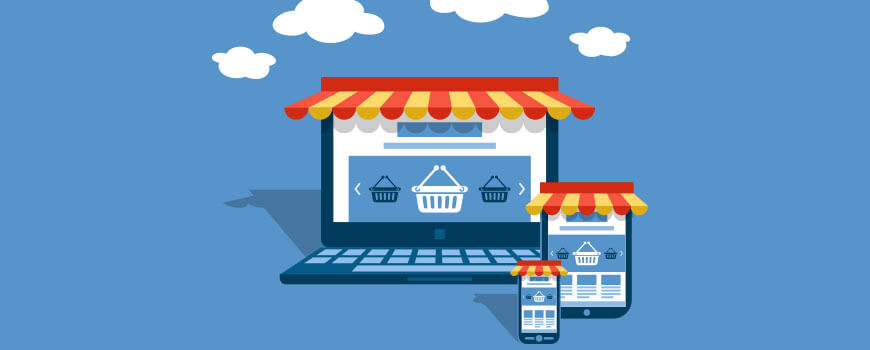Covid-19 is without a doubt a game-changer. It has revolutionized everything from inside us to the outside world such that it is becoming necessary to walk with trends if one needs to keep up with the changing market and the Millennials.
Apart from the world populace getting affected by the COVID-19 pandemic; there has been a sea-change in other sectors too and one of the major domains among them is manufacturing. Although each of us felt the push towards online due to the pandemic, the manufacturing industry that was already on its way to converging the physical and digital before the widespread disruptions of 2020, experienced some major systemic changes.
The struggles of maintaining cost-effectiveness while adopting or planning to adopt Industry 4.0 digitization initiatives will end in 2021 and the manufacturing industry will evolve despite the impact of coronavirus. So, let’s take a look at the top five trends that will reshape the manufacturing industry by providing operational visibility, enabling cost reduction, expediting production times, and delivering exceptional customer support.
1. Adoption of Latest Technologies
Before the pandemic, even though e-commerce was riding on a high note, a majority of selling and buying that happened between the customer and the end client was in-person. Then came the deadly pandemic and jolted the entire way of conducting a business to shopping by customers. The preferred mode of business and shopping became online since that and manufacturers are especially taking a lot of interest in it.
Thanks to the pandemic, the transition to online from offline started taking place more quickly than before and; the manufacturing industry is now on the road to embrace the latest technologies and tricks to stay put in the unprecedented times today and for the uncertain future ahead.
Although there has been economic uncertainty looming large at present, most of the companies, or nearly all, are making the transition or have initiated steps in this direction. AI and machine learning incorporation to automate the process and get intelligible insights into the market trends are picking up pace. While other new technologies like PIM system Eliminate, CPQ, voice commerce, and headless e-commerce have already made headway into the online e-commerce landscape. It is just a matter of time, in the immediate future, before these new technologies would be a day-to-day affair.
Also Read: Why Manufacturers must think of eCommerce Investment and How One Can Scale its Sales Up
2. Supply Chain Technology
The supply chain sector felt the burn during the pandemic the most due to the terrible rise in online shopping. Fearing lockdown and restrictions, the panic buying by people put tremendous pressure on the supply chain management of online businesses. So, in 2021, we can see more of a flexible supply chain system as manufacturing companies have started implementing the latest technologies and strategies in every step of the manufacturing process i.e., procurement, inventory, assembly, logistics, transportation, and sales to scale through the ebb and flow of the current situation.
With effective supply chain management and the latest technologies like AI, machine learning, robotics and automation, Blockchain, IoT, etc. manufacturers can save on costs, deliver products to customers on time, track and improve anything during the process, can reduce operational downtime by finding backup suppliers for the most vital materials, services, or components, stay connected with both suppliers and customers with communication and collaboration tools etc.
3. Real-time Data Integration
Real-time data collection and monitoring can enhance smart manufacturing. It helps the manufacturing process in many ways like you can say goodbye to order errors as the integration of data across platforms bypasses the possibility of a human error in entering data, an increase in equipment efficiency can be achieved, logistics management becomes easy, pursuing greater speed, scale and simplicity across every area of the operations becomes possible etc.
4. Predictive Maintenance
One of the key trends in the manufacturing industry, predictive maintenance helps save a ton of cost and time. A breakdown can happen anytime in equipment, and the time and money one invests behind its repair causes enormous downtime and loss of productivity. Therefore, predicting breakdown, faults or errors in equipment and taking necessary maintenance measures is what predictive maintenance is and; the benefits that follow are – reduced costs, fewer failures, minimized scheduled downtime, optimized parts delivery etc.
With the latest intelligent solutions like IoT, AI, and machine learning, predictive maintenance can help manufacturers dodge downtime by detecting issues even before they arise. It helps them ensure that they are in a healthy working condition to avoid heavy or unplanned expenses in the future. Moreover, monitoring tests can be conducted while equipment is in operation, which means there will be no loss of production due to equipment shutdown.
5. Shifting Focus from B2B to B2C
A manufacturing business does not necessarily have to be B2B; in fact, it is slowly shifting from B2B to B2C and even D2C (Direct to Customer).
Selling to customers is bringing in more appealing benefits for the manufacturing industry than the other way around which is why this trend is going to accelerate further in 2021. Shifting to B2C or D2C for a manufacturing industry means:
Increased Profits: Rather than wholesale prices for their products, companies can get the full manufacturer’s suggested retail price (MSRP).
Faster Time to Market: The lengthy traditional retail sales cycle that requires a company to lock in product development far ahead of order and delivery can be skipped and manufacturers can rapidly prototype, test, and push products to market while achieving a distinct competitive advantage.
Brand Control: The risk of a manufacturer’s brand being diluted or misrepresented by third parties gets eliminated.
Price Control: The MSRP can be reinforced.
Better Customer Data: Manufacturers can collect customer data resulting in better products, stronger relationships, and increased sales.
Final Thoughts
There is uncertainty in the world going back to normal as the pandemic is showing no signs of slowing down. Hence, preparing for the worst and the future is what one must do right now. As per study and statistics, the above-mentioned trends are going to rise and will bring revolution in the manufacturing industry and to survive, as a manufacturer, approaching a prominent ecommerce mobile app development company is the step to be taken at the moment to avoid repenting later.
